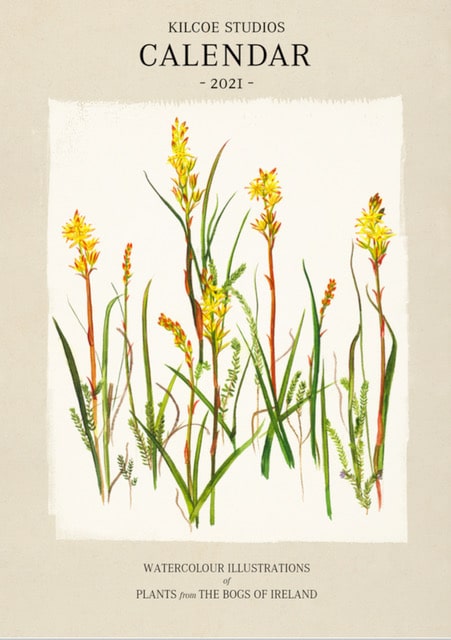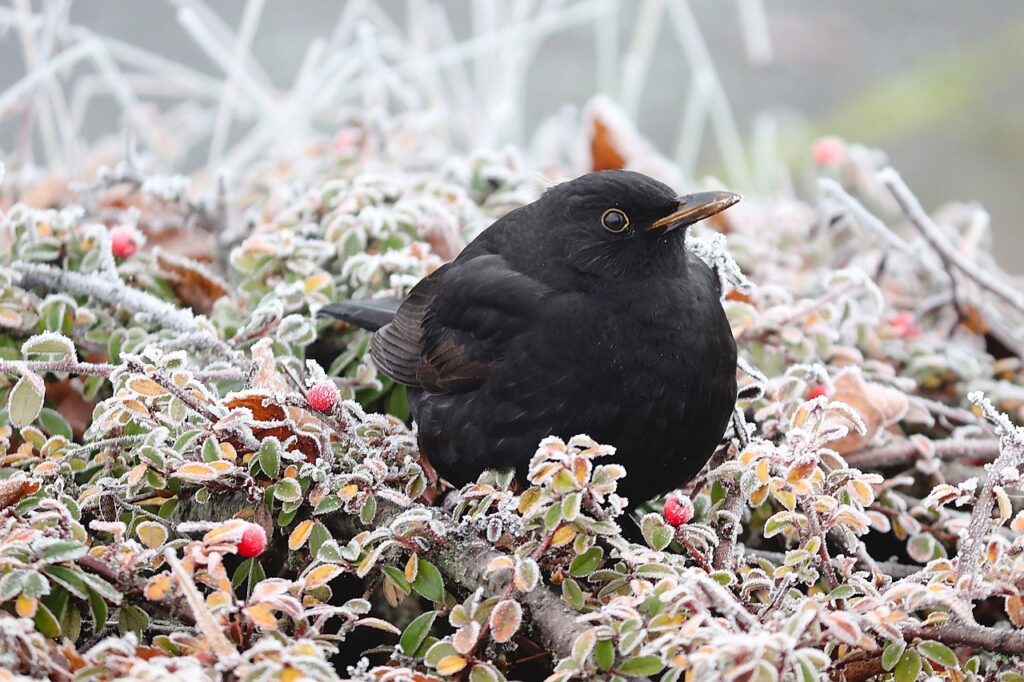
The Kilcoe Studios Calendar has over the years become more of a project than just a business to its creator. It is a project that gets Sonia Caldwell to explore new habitats and new plant types each year and then, near the end of the time spent painting the images for the Calendar, the research begins; a whole other discovery of literature happens – both scientific and more artistic. Sonia then aims to just share snippets of this information on the plant or the habitat that can be read each month – so it is more than just a Calendar!
The images are painted directly from the plant in watercolour paint, which is a practice she began many years ago when doing sketchbook studies for her sculptural work.
The Calendar for 2021 features images from our bogs, of which there are many in West Cork and she shares with us here just some of the interesting facts about bogs that also feature in the Calendar.
A bog is an area is which area is covered with peat, which is a deposit that is formed under waterlogged conditions when the moss and grasses and the other plants cannot break down, due to lack of oxygen and the acidic habitat. Not all bogs are the same; they are a constantly changing environment throughout history.
As a result, they have created layers of history, and we have discovered ancient objects; bodies, butter, old bog roads and the whole Céide field system of wooden houses and fields from the Neolithic (approximately 10,000-4,000 BC) period, which was under four metres of peat in Co Mayo.
The study of pollen in layers of peat in the bogs has also been a rich source of information that has allowed people to study change in climate and conditions over thousands of years, with the fascinating observation of the gradual move of pollen from trees to grasses as our landscape moved from woodland to grassland.
Thankfully the Climate Change issue still seems to be being tackled at government level despite the troubles of these times. We often do not also realise that peatlands are also a sink for carbon dioxide. In Ireland Peatlands store 53 per cent of all soil carbon on the island, but only if it is left undisturbed.
Peatland originally covered approximately 17 per cent of Ireland. It now currently covers approximately five per cent. Currently 53 sites have been designated as special areas of conservation and 75 more as Natural Heritage areas. This has been hampered considerably by the ‘turbary rights’ system that allows individuals to cut turf for their own use, even on protected areas. Cutting turf is huge part of local culture and spending days on the bogs cutting turf was an integral part of life.
In the same way that Bogs are changing over time, so too will our views and practices. Many European countries, especially Holland, have almost destroyed all of their bogs and are now spending enormous amounts of money trying to save and reclaim what is left.
The setting up of the Irish Peatland Conservation council in 1982 was an important stage in our Bog preservation. There seems to active steps being made to preserve our Bogs but, like all things, there is a constant balance to be met between the need to live, commercial interest and preserving our wildlife.
It seems that the best balance is a combination of preserving large areas of un-cut Peatland, allowing areas that have been cut to restore slowly over time and allowing some areas to be used commercially but sensitively.
Plants native to the area and habitat can be re-established – like willow for biomass, broad leaf trees and some of the smaller native plants, which feature in the calendar and which have medicinal uses and can be used commercially for this purpose.
The plants that feature in the Calendar are the small plants – Eyebright, Tormentil, Sundew, Bog Pimpernel, Marsh Lousewort and Bog Myrtle, Wild Billberries (Fraocháns), Heath Milkwort, Bog Bean, Bog Cotton, Heath Spotted Orchid, Bog Asphodel, Marsh Cinquefoil, Purple Moor Grass {Fionnán} Heather, Devils Bit Scabious and Broad Buckler Fern. Names are given in Latin and Gaeilge also.
Thankfully Kilcoe studios was selling online prior to 2020, so it is easy to order online, but it can also be bought in most shops in West Cork, many of which are offering some sort of service to customers either online or by phone during Level Five restricitons – so give them lots of support this Christmas.
Shops stocking the Calendar in Cork are Forest and Flock, Designs; Ballydehob Post office; Quinlans, Green Dot, Bookstór, Wild Designs; and Cork Craft and Design. The Calendar is also assisted on by a local graphic designer and is printed in City Print in Cork.


